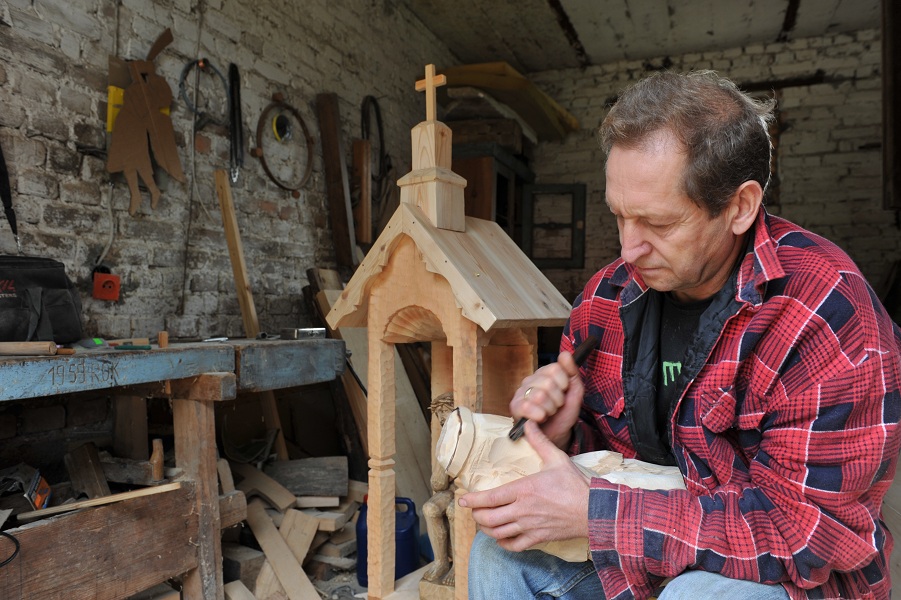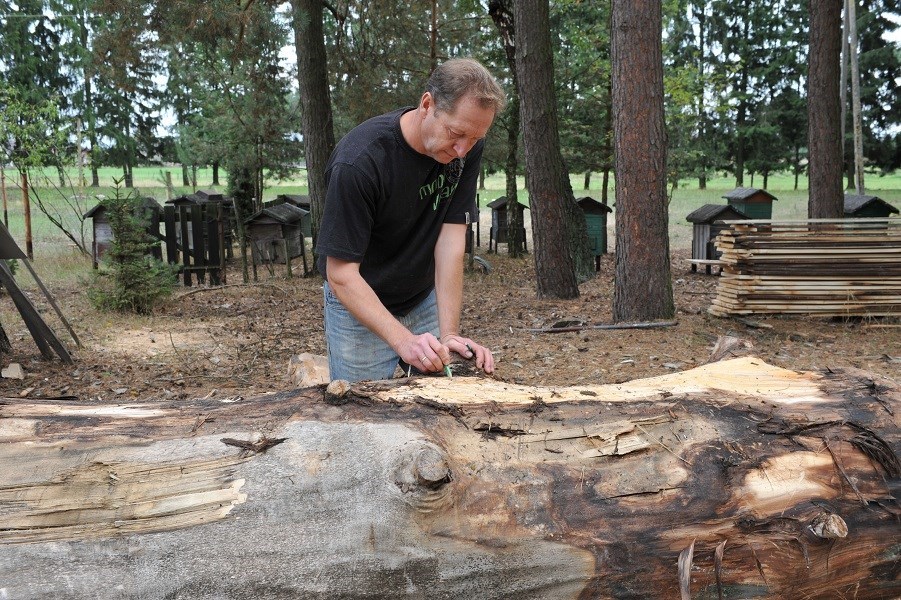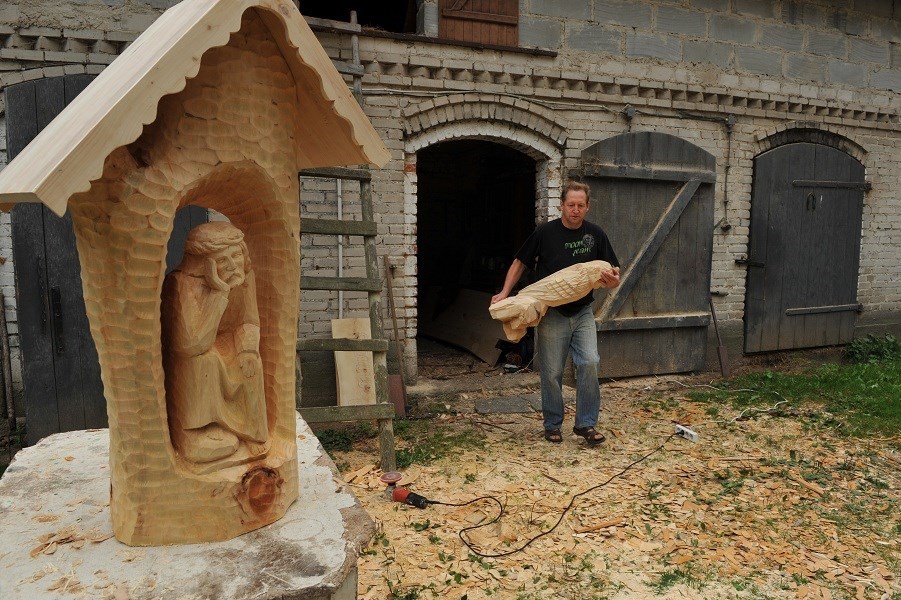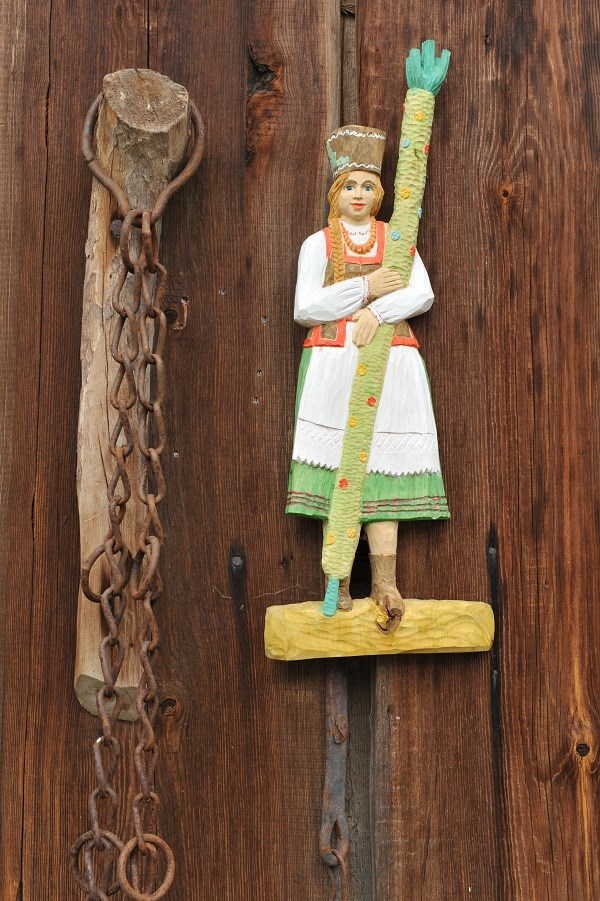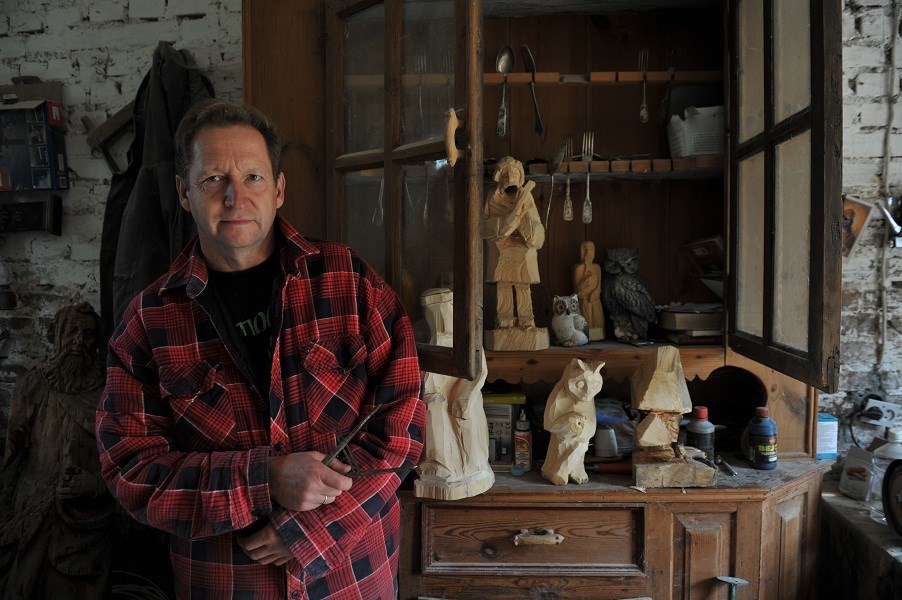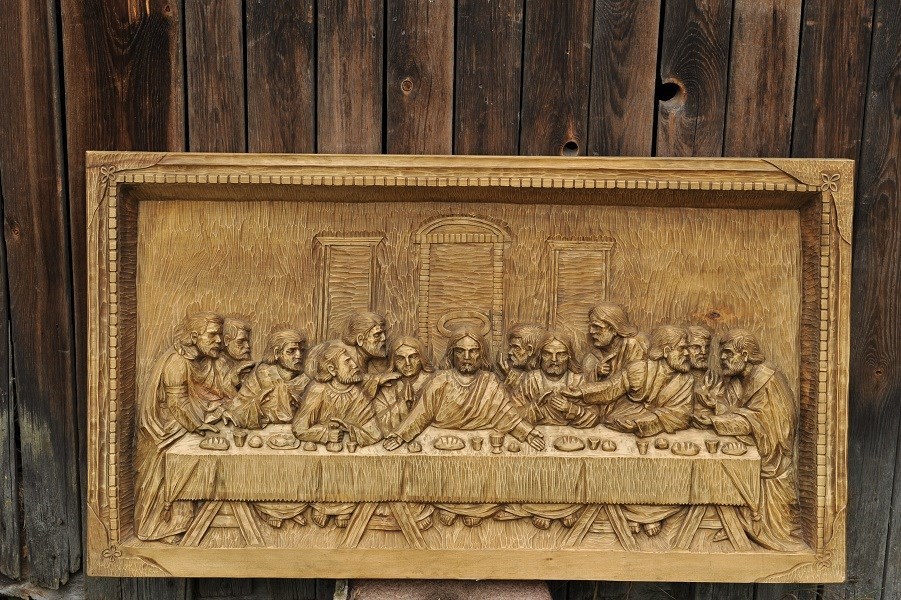Józef Bacławski – the Kurpie Veit Stoss
The artist starts his work by making a sketch on a piece of wood. Then, in his head begins a process of turning the wooden log in a fully expressive, three-dimensional form. Each sculpture is carefully devised, and each move of the chisel deeply thought over. And such is Józef Bacławski himself – accurate, dedicated his art and sunk in ‘artistic thoughts’, as if constantly living in another dimension. Coming in contact with him creates a situation of meeting an artist, who shares the prose and art, the profane the sacred. In his works, Bacławski makes reference to local sacral designs; in twenty five years of his artistic activity he developed his own style, characterised by a large degree of expression and a beautiful form of the figures. Józef Bacławski, the most famous sculptor in the Kurpie region, is self-taught.
One of the books, published by a local cultural organization in Łyse, says he came to be known as ‘the Kurpie Veit Stoss.’ And it is not only for his craftsmanship. He represents calmness and affirmation of life; he is modest, but consistent in following his own path. He can also appreciate others, recognizing them as partners and not competitors, which is a measure of his grandeur as man and artist. Stanislaw Bacławski and Stanislaw Banach are examples of those who followed his footsteps and taken up the art under his tutorial. His works remind of dignified historical sculptures from Kurpie churches – this is the unattainable inspiration of many folk artists. In the case of Bacławski’s sculptures, the inspirational ideal is reached.
As a child, the sculptor made mud pies and dough figurines. When he was a few years old, he became fascinated with folk art shows during a Palm Sunday in Łyse. And this is how he studied, observing local artists. And with his father being a carpenter, he had the workshop at his disposal. It was then that Bacławski started dreaming of becoming a sculptor and get the opportunity to present his works. He managed to make this dream come true.
Bacławski specializes in sacral sculpture (three-dimensional and bass-relief), but does not shy from secular subjects, rooted in the local tradition. The Kurpie region is a backdrop for many of his works. Bacławski sculpts male and female Kurpie, old men, bee keepers climbing trees with beehives, as well as owls, a popular animal in the region. Among religious themes predominant are roadside shrines with the Pensive Christ, figures of various saints, as ordered: e.g. St. Florian, St. Hubert, the Holy Family, the Madonna. He also faced the challenge of creating the popular among artists form of Pope John Paul II. The sculptor creates both small and large forms (up to 3 m height), and some of his sculptures are covered with polychromy. One of his major works is the Way of the Rosary in Łyse. Apart from sculpting, which is his main occupation, Józef Bacławski and his wife Małgorzata run a farm and an agricultural resort.
Bacławski’s top honours for his oeuvre include: Mazowieckie Voivodship Marshal’s Award, a scholarship of the Ministry of Culture and National Heritage and the Kurpik, President of the Kurpie Association Award. Mr. Bacławski takes part in most exhibitions and folk events held in the Mazovia region. Since he participates in numerous competitions, acknowledgement comes also from further afar, for example from the international fairs in Gdynia and Bielsko-Biała. You can meet him during folk art markets; he also takes in sculpture plein-airs and occasional events. He is a member of the Association of Folk Artists.



